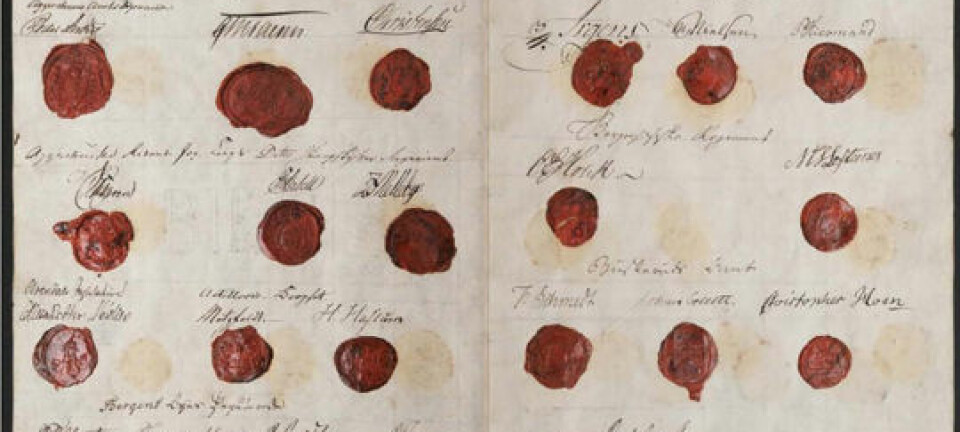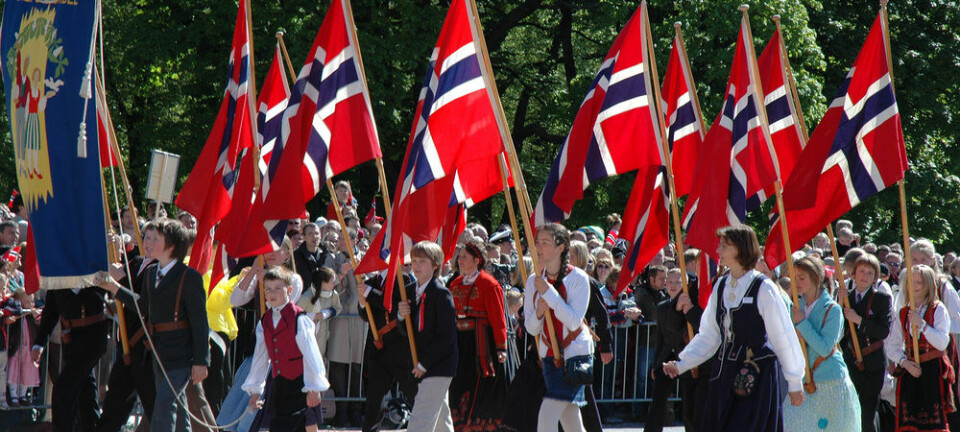This article was produced and financed by University of Bergen

The Norwegian constitution: from autocracy to democracy
When the Norwegian constitution was adopted in 1814, it represented a dramatic break from the absolute monarchy and aristocratic privilege of the past.
Denne artikkelen er over ti år gammel og kan inneholde utdatert informasjon.
When the Norwegian constitution was signed at Eidsvoll on 17 May 1814, it was one of the most radical and modern constitutions of Europe at the time.
Moderately revolutionary
“The 1814 constitution can be considered a moderate revolutionary constitution,” says Professor Eirik Holmøyvik from Faculty of Law at the University of Bergen, Norway.
“Despite the fact that there was no revolution in Norway, our constitution shares the ideology of the other revolutionary constitutions, such as the French and the American.”
“The mind-set of the new constitution fundamentally broke with the principles of absolute monarchy, which until then had been the form of government according to the Lex regia [the King Act] of 1665,” Holmøyvik explains. “But following the new constitutions in several countries, the principles of separation of powers and popular sovereignty dominated.
The parliament and power sharing
The writing of the Norwegian constitution did not occur in a vacuum, and Norway’s founding fathers were solidly updated on the situation in the rest of Europe and the world.
“The standard explanation is that they were inspired by the ideals of the Enlightenment, such as political freedom and universal human rights,” says Holmøyvik. “But the main inspiration certainly was from other constitutions.”
In keeping with the concept of the separation of powers, the new constitution built upon a model of governance where the state is divided into branches. Norway’s constitution followed a traditional template of power sharing between the legislature, the executive and the judiciary powers. This provided the Norwegian parliament, Stortinget, with complete control of legislation.
“The idea that the people created and were able to change the constitution was very much a sign of the times,” says Holmøyvik, who points out that the Norwegian model was however unlike that of many other countries. Despite there being two chambers of Stortinget – Lagtinget and Odelstinget – all legislative power was placed in a one-chamber parliament.
“This split into two chambers was purely a formality. There was no elite, or aristocracy, in the upper chamber Lagtinget, as was common in other countries. The Norwegian constitution was distinctly anti-aristocratic.
Why did the concept of separation of powers appeal so strongly to the founding fathers?
“In 1814, the idea of separation of powers was considered a prerequisite of freedom. The purpose of the separation of powers was to prevent the abuse of power. Commonly the separation of powers in the Norwegian constitution has been linked with the French philosopher Charles de Montesquieu. But this is wrong,” Holmøyvik states categorically.
“The separation of powers in the Norwegian constitution differs from his philosophy, which emphasised a constitutional balance between the king, the aristocracy and the people. The sovereignty of the people was the most important element in 1814, as evidenced by the people’s complete control over legislation and constitutional amendments.”
Liberal on voting rights
The constitution adopted at Eidsvoll provided Norway with one of the world’s most liberal voting rights. It stood out as even more liberal when other European constitutions grew more authoritarian throughout the nineteenth century. Among the ground-breaking features of the Norwegian constitution was that the right to vote included farmers. Despite income and property requirements for voting rights, Norway’s large proportion of freeholders resulted in around 45 per cent of all males being given the right to vote.
The 112 man constitutional assembly was also elected, and included a large group of farmers. The constitution’s true framers were however the assembly’s constitutional committee and its 15 high ranking and well-educated members.
“The constitutional committee practically wrote the Norwegian Constitution. Eighty out of the 115 sections that were presented by this one committee were adopted without alterations and half of the sections were adopted unconditionally by the constituent assembly,” says Holmøyvik.
Eirik Holmøyvik is the author of the 2012 book Maktfordeling og 1814 [Separation of powers and 1814], which is a reworking of his PhD thesis. He is also the editor of the 2013 book Tolkingar av Grunnlova [Interpretations of the constitution]. He is also co-editor of the international and interdisciplinary study Writing Democracy: The Norwegian Constitution 1814–2014, published to coincide with the bicentenary celebrations. All three books are about the Norwegian Constitution.

































